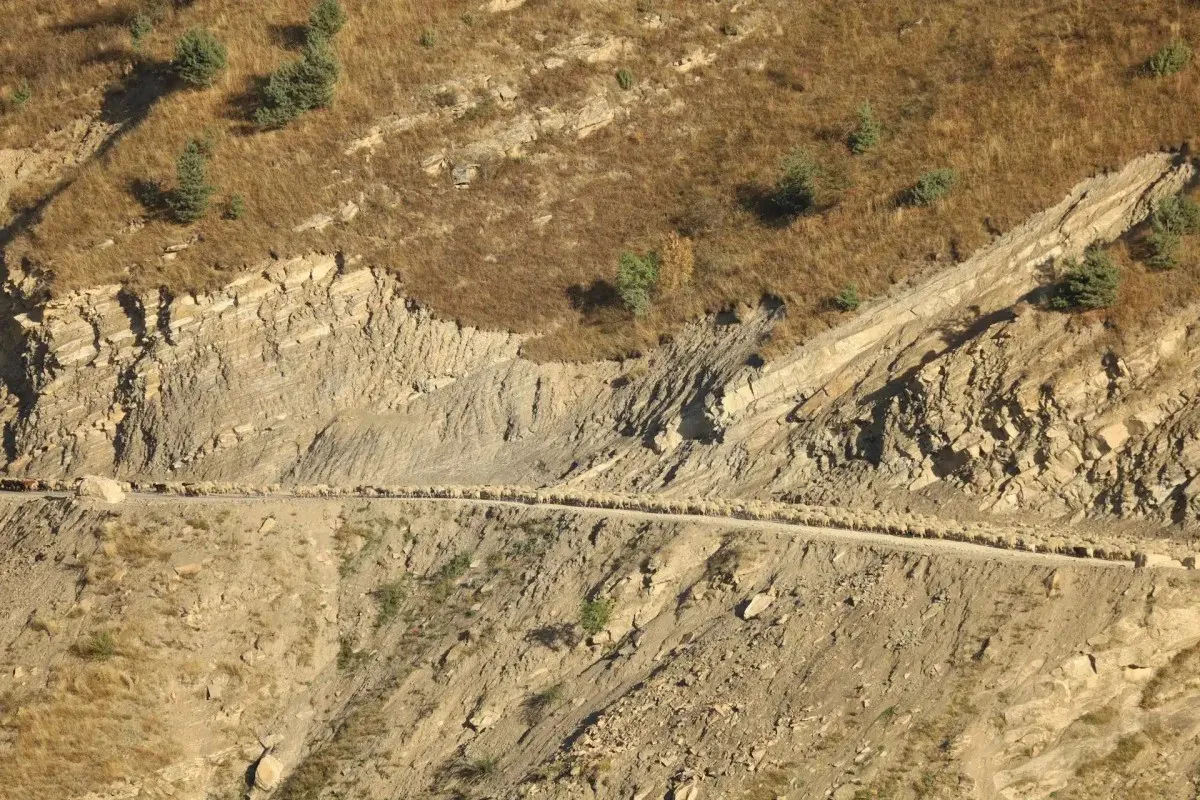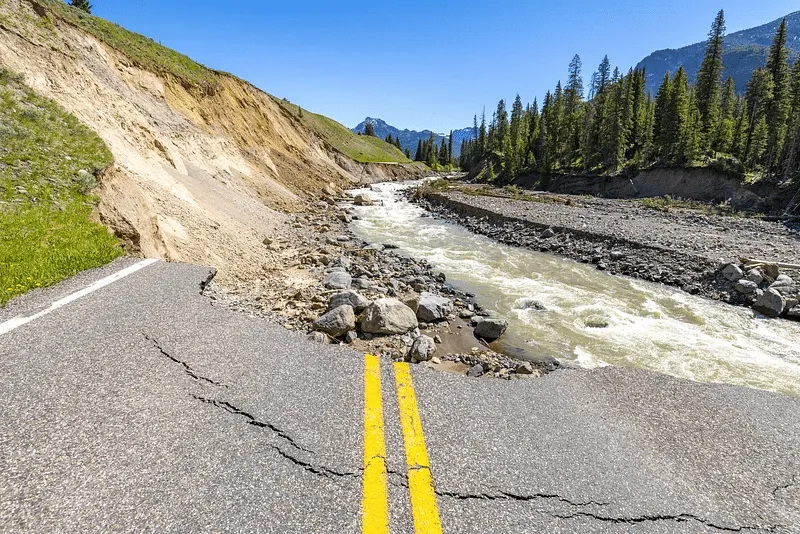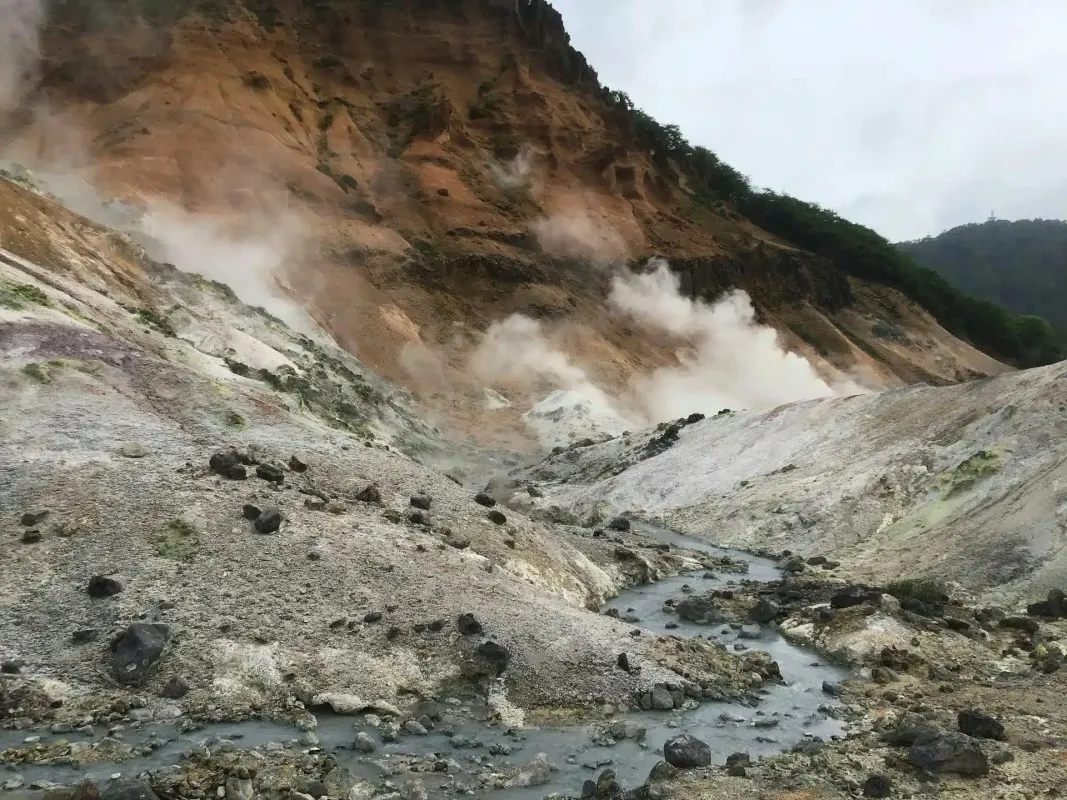Landslides are one of the most destructive natural phenomena that can cause massive damage to life and property. They occur when a mass of rock, soil, or debris moves down a slope under the influence of gravity. Landslides can happen anywhere in the world, but they are more common in mountainous regions with steep slopes.
What is Landslide?
According to the U.S. Geological Survey, a landslide is defined as “the movement of a mass of rock, debris, or earth down a slope”. Landslides are a type of “mass wasting”, which denotes any down-slope movement of soil and rock under the direct influence of gravity.
The term “landslide” encompasses five modes of slope movement: falls, topples, slides, spreads, and flows. These are further subdivided by the type of geologic material (bedrock, debris, or earth). Debris flows (commonly referred to as mudflows or mudslides) and rock falls are examples of common landslide types.
Types of Landslide
Landslides can be classified into four categories based on the type of movement they show, as follows:
- Falls: Falls are sudden movements or landslides that include the breaking away of soil, debris, or rock from slopes and cliffs. Characteristics of fall landslide include contents free falling from height through the air and bouncing and rolling over.
- Topple: Topple landslide occur when rocks or other materials tilt forward and rotate along a point or axis below their center of gravity. This can happen due to fractures, erosion, or undercutting of the slope.

- Slide: Slide landslides involve the displacement of a mass of soil or rock along a rupture or slip surface. The top of this type of landslide has a scarp, which is a steep drop, and a flat portion behind it, which is called the bench. Slide-type landslides are of two types, rotational slides (slumps) and translational (planar) slides.
- Flow: Flow landslide occur when soil, rock, or debris become saturated with water and behave like a fluid. They can move rapidly or slowly, depending on the viscosity and volume of the material. Flow-type landslides include debris flows, earthflows, mudflows, and creep.
Are they linked to climate change?
Landslides have multiple causes, which can be natural or human-induced. However, some studies suggest that climate change may increase the frequency and intensity of landslide in some regions. Climate change can affect landslide in several ways, such as:
- Increasing the amount and intensity of precipitation can trigger landslide by saturating the soil, increasing the water pressure, and reducing the friction and shear strength of the slope material.
- Altering the patterns of snowmelt and glacier retreat can change the hydrological conditions and stability of the slopes.
- Increasing the frequency and magnitude of extreme weather events, such as storms, floods, droughts, and heat waves, can cause erosion, weathering, and cracking of the slope material.

- Changing the vegetation cover and land use can affect the root strength and cohesion of the soil, as well as the evapotranspiration and infiltration rates.
- Increasing sea level rise and coastal erosion can undermine the base of the slopes and increase the risk of submarine landslides and tsunamis.
Causes
Landslides are triggered when the forces acting down-slope (mainly due to gravity) exceed the strength or resistance of the materials that form the slope. Some of the common causes of landslides are:
- Earthquakes: Seismic activities can induce landslide by shaking the ground and creating cracks and fissures in the slope. Earthquakes can also trigger liquefaction, which is the process of soil losing its strength and behaving like a liquid due to increased pore water pressure. Earthquake-induced landslide can be very large and destructive, especially in mountainous regions.
- Erosion: Erosion is the removal of soil or rock by water, wind, ice, or gravity. Erosion can reduce the lateral and vertical support of slopes, making them more prone to landslide.
- Volcanoes: Volcanic eruptions can trigger landslide by producing large amounts of ash, lava, and pyroclastic flows.

- Human activities: Human activities can also cause or contribute to it by altering the natural conditions of the slopes. Some of the human activities that can cause it are:
- Deforestation: Cutting down trees and vegetation can reduce the root strength and cohesion of the soil, making it more susceptible to erosion.
- Construction: Building roads, houses, dams, and other structures can change the slope geometry, drainage, and load, which can affect the stability and equilibrium of the slopes.
- Mining: Extracting minerals and ores can create voids and cracks in the slope material, which can weaken the slope and increase the risk.
- Irrigation: Applying water to the crops can increase the soil moisture and water pressure, which can reduce the soil strength and trigger it.
- Excavation: Digging or removing soil or rock from the slopes can reduce the support and increase the stress on the slope material.
Zones of landslide
Landslides can occur in any region of the world, but some areas are more prone to it than others. The susceptibility of a region to it depends on several factors, such as the slope angle, the geology, the climate, the vegetation, and the human activities. Some of the highly vulnerable regions:
- Mountainous regions: These regions have steep slopes, high relief, and complex geology, which make them susceptible to it. Examples of mountainous regions that experience frequent landslides are the Himalayas, the Andes, the Alps, and the Rockies.
- Volcanic regions: These regions have unstable slopes, composed of loose volcanic materials, such as ash, pumice, and lava. Volcanic regions also risk volcanic eruptions, which can trigger it. Examples of volcanic regions that are prone to landslides are India, Indonesia, Japan, the Philippines, and Hawaii.

- Coastal regions: These regions have slopes that are exposed to the action of waves, tides, and currents, which can erode the base of the slopes and cause landslides. Coastal regions also face the threat of sea level rise and storm surges, which can increase coastal erosion and landslides. Examples of coastal regions that are vulnerable to landslides are California, Oregon, Washington, Alaska, and the Caribbean islands.
- Tropical regions: These regions have high rainfall, which can saturate the soil and trigger landslides. Tropical regions also have dense vegetation, which can increase the organic matter and water content of the soil, making it more prone to landslides. Examples of tropical regions that are affected by landslides are Central and South America, Africa, and Southeast Asia.
Effects of landslide
Landslides can have various effects on the environment and society, depending on the type, size, speed, and location of the landslide. Some of the possible effects of it are:
- Loss of life and injury: Landslides can kill or injure people and animals that are caught in their path. It can also bury or destroy houses, buildings, roads, bridges, and other infrastructure, trapping or isolating people and hampering rescue operations.
- Damage to property and infrastructure: It can cause extensive damage to property and infrastructure, resulting in economic losses and disruption of services. It can also damage or block water supply, sewage, power, and communication lines, affecting the quality of life and health of the people.
- Soil erosion and sedimentation: It can remove the topsoil and expose the underlying rocks, which can increase soil erosion and sedimentation. This can affect the fertility and productivity of the soil, as well as the water quality and aquatic ecosystems downstream.
- Flooding and debris flow: Landslide can dam or divert rivers and streams, creating temporary or permanent lakes, which can overflow and cause flooding. Landslide can also mix with water and form debris flows, which are fast-moving mixtures of water, soil
Keep Reading
Indian agriculture household earns just Rs. 10,218 in a month: Govt
Post-harvest losses still high, reveals data shared in Lok Sabha
Support us to keep independent environmental journalism alive in India.
Follow Ground Report on X, Instagram and Facebook for environmental and underreported stories from the margins. Give us feedback on our email id greport2018@gmail.com.
Don’t forget to Subscribe to our weekly newsletter, Join our community on WhatsApp, Follow our Youtube Channel for video stories.









